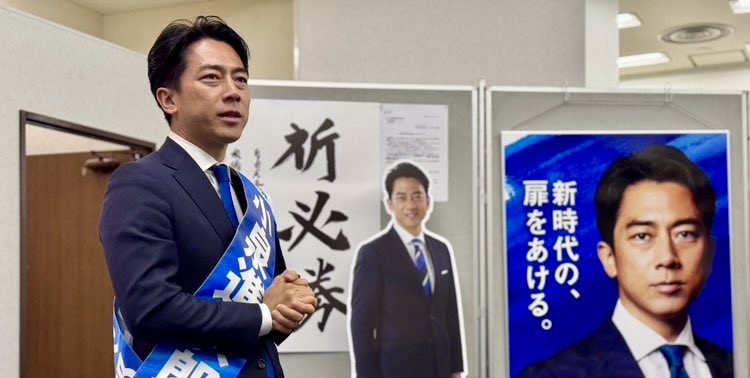The Peninsula
Japan's Succession Battle Pits Moderates Against the Right—and Korea Is Watching

As he heads out the revolving door of Japanese politics, Prime Minister Shigeru Ishiba has two important stops on his agenda. The first will be in Busan, South Korea, for a meeting with South Korean President Lee Jae Myung next week. The two leaders have vowed to solidify the momentum in closer relations and to make these meetings a regular feature of those ties.
Three days later, the Liberal Democratic Party (LDP) will pick a new party leader, with the winner expected to become Japan’s prime minister. Immediately after that hurdle has been cleared, Ishiba is reportedly planning to deliver a long-expected major address, likely in Tokyo, on his version of the lessons of World War II and his vow not to repeat “the devastation of war.”
The outgoing Japanese leader represents the more liberal wing of the LDP and had hoped to cement ties with neighboring Korea and ease tensions with China while seeking more space to pursue an independent foreign policy. But his government was far too weak to take any bold steps. A longtime foe of the late Prime Minister Shinzo Abe, Ishiba may now be worried about the candidates for succession from the right, led by former Minister of Internal Affairs and Communications Sanae Takaichi.
A rare female figure in Japanese politics, Takaichi has embraced the anti-immigrant and hyper-patriotic rhetoric of the small but surprisingly successful Sanseito, which won fourteen seats in the last election for the upper house of the National Diet on a “Japan First” platform that consciously echoed the ideology and agenda of Donald Trump’s MAGA movement.
The prospect of a victory by Takaichi, who is considered a strong contender along with the more moderate Minister of Agriculture, Forestry and Fisheries Shinjiro Koizumi, the son of a former prime minister, also rattles close observers of Japan in Korea.
“Takaichi is a disaster for Korea,” said a former Korean ambassador to Japan, who spoke to this writer on background. “We are closely watching the succession process in Japanese politics,” added former Ambassador to Japan Shin Kak-soo. “It is true that we have concerns over the election of a hawkish PM who might derail the restoration process of Korea-Japan relations.”
Ambassador Shin, who remains active in promoting Korea-Japan ties, gives some credit to President Lee for continuing to build on the previous administration’s outreach. “Now the ball is in Japan’s court,” the former diplomat said. Takaichi, if elected, “would change her revisionist attitude toward the past history as President Lee Jae Myung did after his election,” he forecast.
The Battle within the LDP
The vote within the LDP comes little more than a year after Ishiba won an improbable victory in a similar contest following the resignation of then Prime Minister Fumio Kishida. He inherited a party and a government that was widely discredited due to fundraising scandals and rising cost of living. Along with poor LDP election performance across Japan and other domestic issues, Ishiba faced the challenge of the Trump administration and harsh tariffs imposed on Japan.
Ishiba tried to hang onto power, including accepting a disadvantageous deal with the United States on tariffs and investment. But those defeats and signs of growing discontent ultimately forced his resignation.
The lineup of contenders this time is similar to the vote a year ago, though with only five candidates. The initial vote takes place among almost a million party members, given the equivalent of 295 votes, and 295 members of the parliament. If no one has a majority, there is a runoff with the legislative members and 47 votes from prefectural chapters. In that second round, the still-powerful party leaders—all of them former prime ministers—would have more sway.
Among the candidates, Takaichi is joined on the right by former Minister for Economic Security Takayuki Kobayashi. On the left, there is the current Chief Cabinet Secretary Yoshimasa Hayashi. In the center are two well-known figures—former Minister for Foreign Affairs Toshimitsu Motegi and Agriculture Minister Koizumi, the latter of whom leads in many polls. Whomever becomes party leader must still form a de facto coalition government in order to have a working majority—even informally—which requires forming a pact with the Komeito and at least one of the other opposition parties.
In the initial debates among the candidates, foreign policy has been at best a secondary issue. There has been disproportionately large attention paid to alleged problems with foreign workers and tourists, as well as immigration. But the main focus areas are curbing inflation, restoring the social security system, reducing taxes, and political reform.
The only foreign policy issue to get much attention has been the Trump administration’s tariffs. To the extent that foreign policy is a concern, the consensus among observers in Seoul and Tokyo is that the best choices are the two former foreign ministers, Hayashi and Motegi, both of whom have good reputations on the foreign policy front.
“The best choice for Japan’s diplomacy is undoubtedly Hayashi, who has steadily acted as a moderate as foreign minister,” says a veteran Japanese foreign policy reporter at a major daily newspaper. “He has a good record of dialogue with Beijing as well as with Washington.” In Seoul, “Hayashi and Motegi are favorable choices for us,” says Ambassador Shin. Hayashi is considered a long shot, but he could emerge if there is a stalemate between Takaichi and Koizumi, who faltered the last time around when he was considered an early favorite.
Conservative front-runner Takaichi has tried to soften her image but remains anathema to many inside and outside the party as too extreme and likely to scare away many voters. Possible coalition partners like the Komeito have already made clear that they will not join a government headed by her.
Who is Koizumi?
Koizumi, at age forty-four, is increasingly the odds-on favorite to become Japan’s next prime minister. The last time he ran, a year ago, he displayed the inexperience and lack of confidence that seemed to confirm the view that he is too young for the job. But this time around, he looks more polished and presents himself as the person who can both unify the LDP and broaden its appeal again, especially to younger voters. He is also considered more acceptable to the opposition parties that would have to cooperate to make him prime minister and pass vital legislation.
But there remain considerable questions about his foreign policy views, particularly his approach toward Korea and China. He has been a regular visitor to the Yasukuni Shrine, though only as a politician and cabinet minister, following in the footsteps of his father. He has avoided the question of whether he would visit as prime minister.
“Koizumi has two faces, conservative and realistic,” says the former Korean ambassador to Japan, who spoke on background. “Still, I am not that much worried about his position regarding Korea-Japan relations.” The former envoy points out that Koizumi’s parliamentary district in the Kanagawa area is home to a large population of Korean-Japanese residents.
Koizumi notably embraced the importance of Korea-Japan relations in a press conference announcing his candidacy, apparently eager to dispel the idea that he would turn in a more right-wing direction.
“South Korea is an important neighboring country with which we must cooperate as a partner in addressing various global challenges. The importance of South Korea-Japan relations and trilateral cooperation with the U.S. is growing,” Koizumi recently declared. He pledged continuity with the path taken by the previous two Japanese administrations.
Regardless of who wins the LDP leadership, the path ahead in Japan is likely to be fraught with ongoing political instability until the party wins a new election and regains its majority.
“For the time being, Japanese politics is in chaos and flux, limiting Japan’s international role,” concludes Ambassador Shin. “That is quite detrimental to our interests too.”
Daniel C. Sneider is a non-resident Distinguished Fellow at the Korea Economic Institute of America and a lecturer in East Asian Studies at Stanford University.
Feature image from Shinjiro Koizumi’s official X account.
KEI is registered under the FARA as an agent of the Korea Institute for International Economic Policy, a public corporation established by the government of the Republic of Korea. Additional information is available at the Department of Justice, Washington, D.C.
